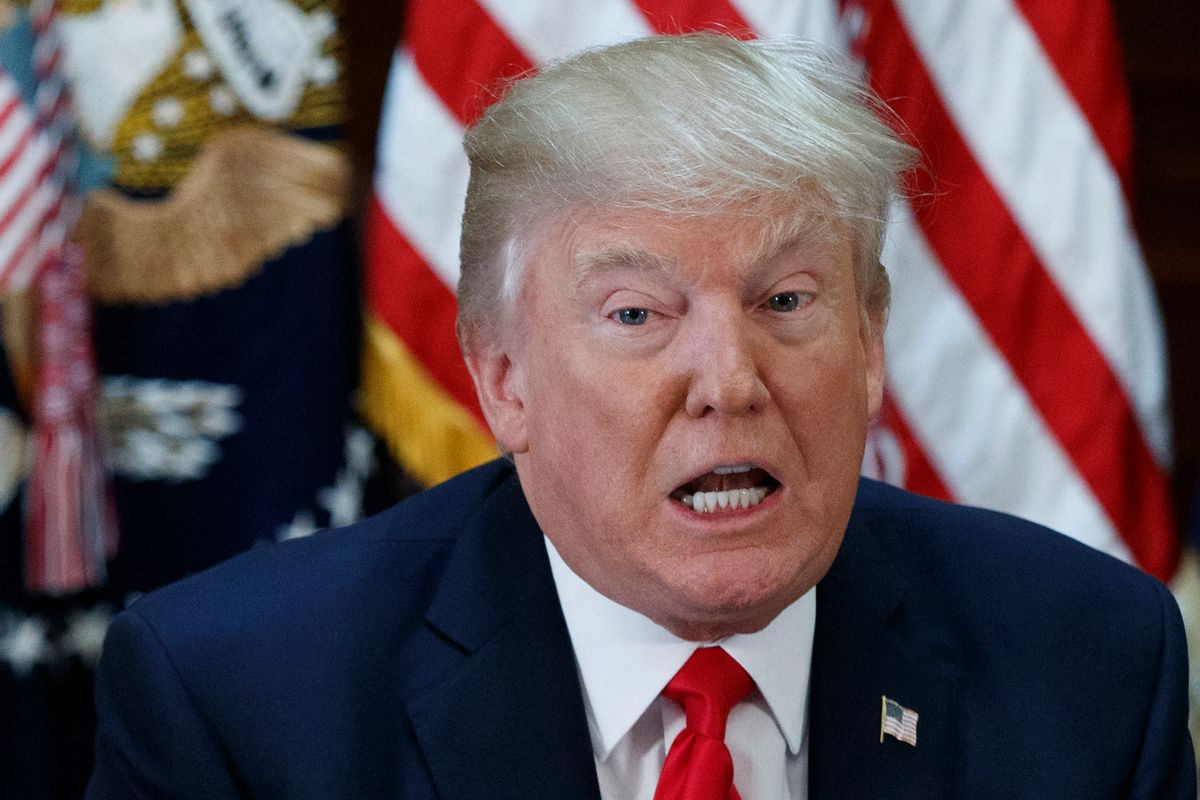Like smokers trying to quit a pack-a-day habit, some journalists are finally trying to drop the long-running practice of portraying President Donald Trump as a “populist.”
Sparked specifically by Trump’s blatant economic flip-flops this month regarding trade deals, currency policy concerning China, and the Export-Import Bank, more members of the press seem willing to concede that Trump’s attempt to govern as a populist has quickly ended.
Los Angeles Times columnist Doyle McManus announced that Trump’s “populist revolution” is “already over — at least for now.” The Week agreed that Trump is “beating a hasty retreat from populism.” And even The New York Times, which has been an aggressive promoter of the “populist” meme, recently noted that Trump, “has stocked his administration with billionaires and lobbyists while turning over his economic program to a Wall Street banker.”
But like any stubborn habit, the “populist” one won’t be easy to quit. Note that while that Times article detailed Trump's obviously non-populist agenda, Times reporters regularly use the label to describe him in other pieces.
This month alone, the Times has referenced Trump’s “populist appeal,” credited a “populist economic message” for his political rise, grouped him with “fellow populist Marine Le Pen,” and described both him and Turkey’s president as “populist leaders.”
And the Times isn’t alone in clinging to the narrative. The Christian Science Monitor last week reported, “Trump the populist is back.”
Reminder: Populism represents a political struggle on behalf of regular people against elite economic forces. Today, Trump’s brand of pro-corporate, anti-worker politics represents the exact opposite.
The clues have not been hard to find, as Trump quickly stacked his administration with a cavalcade of pro-business multimillionaires and billionaires. But that was just the beginning.
The president and his Republican allies have spent much of this year trying to repeal health care for 20 million Americans, pass massive new tax cuts for the wealthy, eliminate a State Department program “which sends food to poor countries hit by war or natural disasters,” greatly expand the Pentagon’s budget, potentially block overtime pay for workers making less than $47,000 a year, defund Planned Parenthood, defund public broadcasting, abolish the government block grant program that helps fund Meals on Wheels for the elderly, and roll back rules protecting net neutrality.
So no, Trump’s not a “populist,” even if he has “styled himself as a man of the people.” (Trump’s residence in New York City, where the first lady currently lives, is an apartment that’s decorated in 24-karat gold.)
The whole Trump’s-a-populist trope has been a media mess for more than a year now.
And why “populist”? Why is that almost always the catch phrase journalists reach for when “white nationalist,” “nativist,” and “authoritarian” are likely more accurate descriptions of Trump?
The truth is, “populist” serves as a crutch. And when it’s still used today, the identifier represents a lazy shorthand used to describe Trump’s grab bag of often contradictory political positions.
Last year, the narrative served as a campaign mirage: the Brigadoon of American politics. Trump’s “populism” enticed the press and provided journalists with an acceptable, nonthreatening way to address his primary and general election successes. It was a way to downplay white nationalism, race-baiting, and sexism as the driving forces of his campaign. Yes, Trump cynically embraced populist rhetoric. But journalists ought to be able to see beyond campaign ploys like that.
To this day, the concept allows journalists to engage in more "both sides" analysis, comparing and contrasting Trump’s “populism” with the approach of Democratic candidate Bernie Sanders, who actually does promote a populist, pro-people agenda.
Sanders’ signature political crusade revolves around making sure all American have access to health care. By contrast, Trump continues to plot the overthrow of the Affordable Care Act, which would cause millions of Americans to lose their insurance coverage.
How does any working journalist look at those two sets of facts and conclude, yeah, Trump and Sanders are both populists?
Even more troubling have been the press pronouncements that some of Trump’s deeply nativist proposals are somehow populist.
As The New York Times wrote [emphasis added]:
For the first two months of Mr. Trump's presidency, Mr. Bannon occupied an unassailable perch at the president's side — ramming through key elements of his eclectic and hard-edge populist agenda, including two executive orders on freezing immigration from several predominantly Muslim countries.
This is especially upsetting. Trump's goal of banning people from Muslim countries from entering the United States, and his scheme to build a $20 billion wall to fix a nonexistent immigration crisis, have very little to do with “populism.” But they do have a lot to do with nativism and the idea that white America is under siege and that the federal government must take unprecedented action to protect its fragile sovereignty.
Portraying that as “populism” — as Trump sticking up for the little guy — is dangerous and deeply misguided.



Shares